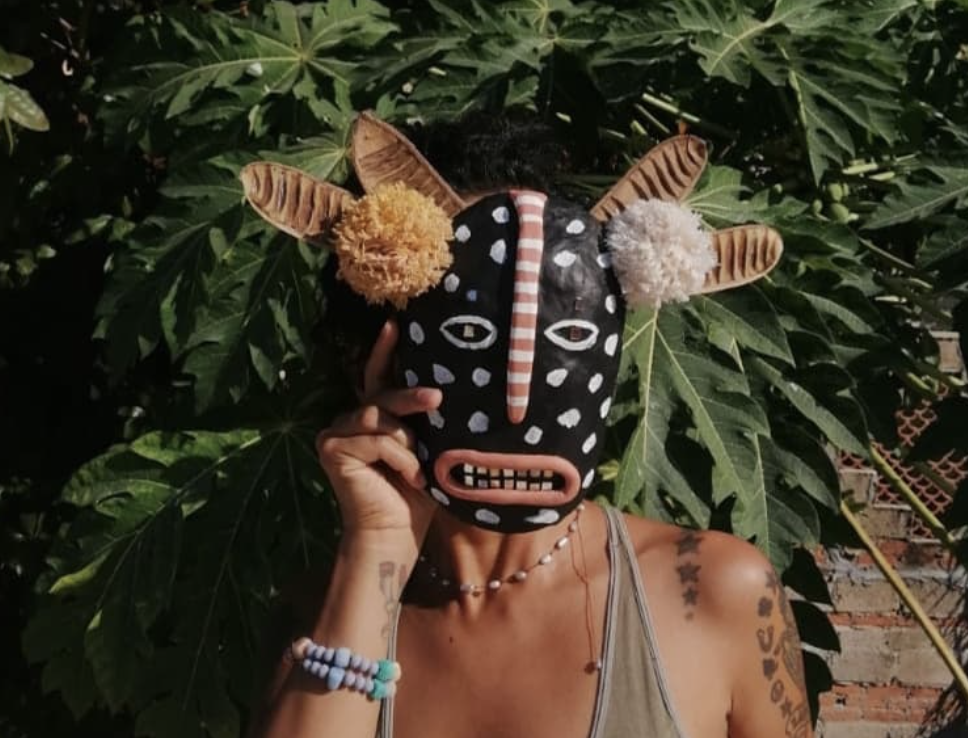Across the spectrum of classically inspired national and regional local art, from paintings to sculpture, and masks, there is a long and still very active history of the presence of the demonic.
Why? Is this art religious? How did something with such strong stigma in the West become so ubiquitous here? To answer these questions, you have to look at both Mexican art history and the cultures of the country’s many regions.

The presence of the devil in traditionally Mexican-made masks is far from traditional to Mexico, and actually came about as a result of Mexico’s conquest. The Spanish were able to completely change the economic structure of Mexico, slaughtering livestock and stealing land, but they weren’t able to eradicate the native practices completely. When the indigenous dances they tried to eradicate continued, the Spanish changed course and decided instead to co-opt the traditions, applying Catholic figures to the masks that once portrayed native gods. The devil, who sometimes appears painted black and red as inspired by a night god called Tezcatlipoca, was one of them.
The use of natural clay for these masks as well as diablitos, sculptures made popular in Michoacan by a sort of outlaw artist figure by the name of Marcelino Vicente, was a natural choice for an economically depleted country with plenty of clay available as a free and natural resource. Natural clays continue to be used, and molds are used instead of pottery wheels, just as they were 500 years ago.
Despite the longstanding traditional methods used for making these sculptures, the story of the diablito figurines and tableaus, which can still be found today, depicting flesh-eating devils as well as symbols of current events, is a much more modern one.
In the town of Ocumicho, in Michoacan, these sculpted scenes that have been said to resemble the nightmare scenes painted by Hieronymus Bosch began to appear in the 1960s. While now embraced, it wasn’t until Vicente took them to neighboring towns to sell that they began to draw positive attention and buyers at the open-air markets that became common as people looked for new ways to sustain themselves after the Mexican Revolution.

Back in Michoacan, his lifestyle was uncommon, his subject matter was unwelcome, but thanks to appreciators of his new style – specifically people like Francisco Mendoza of Fonart, a government folk-art agency that gave Vicente his first major gallery show, he was able to pioneer and establish an art form in a short five-year span, prior to being beaten to death at a bar the weekend before Dia de lo Muertos.
The artisan groups that he formed, men and women who worked together despite strict social rules that only allowed socialization between men and women related by blood or through godparents, meant that people directly trained by Vicente would be able to continue to craft his diablitos and teach the next generation to do it as well. Today you can find work in this style at Mexican markets, souvenir shops, and even galleries in and beyond Michoacan, and in places such as San Antonio in the US!

Ashley Jones is an arts writer and creative, currently based in San Pancho, Mexico. Her work appears in publications such as Dovetail Magazine, and catalogues for galleries including the Pollock Gallery in Dallas, TX. She is currently co-writing the 13th edition of Friend of The Artist, and critically analyzing real-life horror in an upcoming piece for the UK-based site The Final Girls, and can be found on Twitter here.


